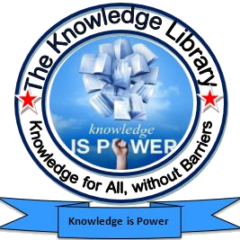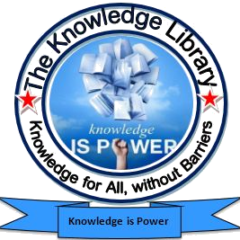What Is Copyright And What It Protects?
Copyright is a form of intellectual property that provides legal protection to the creators of original works of authorship. It grants the creator exclusive rights to use, distribute, and profit from their work, while also protecting the work from unauthorized reproduction or use by others. Copyright is automatically conferred upon the creation of a qualifying work, and it gives the author or copyright holder specific rights to control how the work is used, copied, distributed, or adapted.
Here’s a detailed explanation of what copyright is, how it works, and its significance:
1. Definition of Copyright
Copyright is a legal right that grants the creator (author, artist, or creator) of an original work the exclusive right to use and distribute that work, typically for a limited time. This right is intended to allow the creator to benefit financially from their work and to prevent others from copying, distributing, or altering it without permission.
Copyright covers a broad range of creative works, including:
- Literary works (books, articles, poems, etc.)
- Musical works (songs, compositions)
- Dramatic works (plays, scripts)
- Artistic works (paintings, sculptures, photographs)
- Software and computer code
- Films, videos, and audio recordings
- Architectural works
- Choreographic works, dance performances
- Sound recordings
- Broadcasts and performances
2. What Copyright Protects
Copyright protects the expression of ideas, not the ideas themselves. In other words, it grants protection to the specific way in which an idea or concept is presented or expressed, rather than the underlying idea or information. For example, a novel’s storyline (idea) is not protected by copyright, but the specific words and structure of the novel (expression) are.
Copyright also covers a fixed form of expression. This means that the work must be written, recorded, or otherwise fixed in a tangible medium, such as:
- Writing (books, articles)
- Recordings (music, podcasts)
- Digital formats (software, websites)
- Visual media (photographs, paintings)
- Films, and videos.
3. The Rights Conferred by Copyright
Copyright grants a set of exclusive rights to the author or copyright holder. These rights typically include:
- Reproduction Right: The exclusive right to reproduce copies of the work (e.g., making photocopies of a book or printing multiple copies of a song).
- Distribution Right: The right to distribute copies of the work to the public by sale, rental, or lending.
- Modification (Derivative Works) Right: The right to create adaptations or derivative works based on the original, such as turning a book into a movie or remixing a song.
- Public Performance Right: The right to perform the work in public (e.g., playing a song on the radio, staging a play, showing a film in a theater).
- Public Display Right: The right to display the work in public (e.g., showing paintings or photographs in a gallery).
- Right to License: The right to give permission for others to use the work under specific conditions, often in exchange for payment (royalties).
Copyright holders can transfer or license these rights to others, allowing others to use or profit from the work while still retaining ownership.
4. How Copyright Works
Copyright protection is automatic when an original work is created and fixed in a tangible medium. For example, if you write a poem or paint a picture, you automatically own the copyright to that work the moment you complete it, without needing to file for registration.
However, registering your copyright with the relevant government office (such as the U.S. Copyright Office or the UK Intellectual Property Office) provides certain legal advantages, such as:
- Public record of the copyright claim.
- Ability to sue for statutory damages and legal fees if someone infringes on your copyright.
- Increased legal protection and enforcement options.
In most jurisdictions, the copyright owner is the creator of the work, unless the work is created as part of an employee’s job duties (in which case the employer may own the copyright, depending on the terms of the employment agreement).
5. Duration of Copyright
Copyright protection is not indefinite. The duration of copyright protection depends on various factors, including the nature of the work and the laws of the country where the copyright is claimed. In many countries, the general rules are as follows:
- For individual authors: Copyright lasts for the lifetime of the author plus 70 years (this is standard in many jurisdictions, such as the United States and European Union).
- For works created for hire, anonymous, or pseudonymous works: Copyright typically lasts 95 years from the date of publication or 120 years from creation, whichever is shorter.
- For works published before 1978: Older works may still be under copyright if the owner renewed the copyright. If the copyright was not renewed, the work may have entered the public domain.
After the copyright expires, the work enters the public domain, and can be freely used by anyone without the need for permission from the original creator.
6. Fair Use and Exceptions
While copyright grants creators exclusive rights, there are certain exceptions and limitations to protect public interests, most notably the doctrine of fair use (in the U.S.) or fair dealing (in the U.K. and other common-law jurisdictions). These exceptions allow limited use of copyrighted material without permission under certain conditions, such as:
- Criticism, Commentary, and Parody: You can use copyrighted material to comment on, critique, or parody the original work.
- Education and Research: Using copyrighted materials for non-commercial educational purposes, such as teaching in classrooms or research, may fall under fair use or fair dealing.
- News Reporting: Copyrighted materials may be used in news reporting, as long as it’s not for commercial purposes.
- Library and Archival Uses: Libraries and archives may make copies of works for preservation or archival purposes.
The application of fair use or fair dealing is determined by factors such as the purpose of use, the nature of the work, the amount used, and its impact on the market for the original work.
7. Copyright Infringement
Copyright infringement occurs when someone uses a copyrighted work without permission or beyond the scope of granted permissions. Common forms of infringement include:
- Copying and distributing a work without the copyright holder’s consent.
- Creating a derivative work (such as a remix, translation, or adaptation) without permission.
- Publicly performing or displaying a work without the required authorization.
- Using a copyrighted work in a commercial product (e.g., software, advertisements) without a license.
Copyright holders can enforce their rights by sending cease-and-desist notices, filing Digital Millennium Copyright Act (DMCA) takedown notices (for online content), or pursuing legal action in court for damages. Depending on the severity of the infringement, penalties can include statutory damages, actual damages, and legal fees.
8. International Copyright Protection
Copyright is generally recognized internationally, thanks to agreements such as the Berne Convention for the Protection of Literary and Artistic Works, which has been signed by over 170 countries. The Berne Convention mandates that works from one member country must be given the same level of protection as works from another member country, without requiring registration in each individual country.
Additionally, countries that are signatories to the World Intellectual Property Organization (WIPO) Copyright Treaty also offer international protection for copyrighted works.
9. Why Copyright is Important
- Incentivizes Creativity and Innovation: Copyright provides creators with the incentive to produce new works by ensuring they can control and profit from their creations.
- Economic Value: Copyrighted works (books, films, software, etc.) can generate significant economic value through sales, licensing, and royalties, benefiting not just individual creators but entire industries (e.g., publishing, entertainment, software).
- Cultural Preservation: Copyright helps preserve and promote creative expression, making it possible for future generations to access and enjoy original works while ensuring creators are rewarded for their efforts.
Conclusion
In summary, copyright is a legal tool designed to protect the rights of creators over their original works. It grants them exclusive rights to reproduce, distribute, perform, and adapt their works, and it encourages continued creativity and innovation. Copyright is automatic upon the creation of a qualifying work but can be registered for additional legal protection. While there are exceptions, such as fair use, copyright infringement can lead to legal consequences, and its protections extend globally under international agreements.

